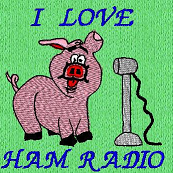SmartSDR v4.1.3 | SmartSDR v4.1.3 Release Notes
SmartSDR v3.10.15 | SmartSDR v3.10.15 Release Notes
The latest 4O3A Genius Product Software and Firmware
Need technical support from FlexRadio? It's as simple as Creating a HelpDesk ticket.
8000 series "FT8 Wideband Solution"

I was interested to see that Flex 8000 series radio will support open source application code to allow FT8 TX and RX over 40khz with multiple transmit channels but the radio complying with rules of 3khz segmentation. Interested but unconvinced that this would be without problems.
Now, one day later than this Flex FT8 announcement came a release from the WSJTx team that seems to cast doubt over the Flex proposal.
"Joe Taylor’s team will soon offer a “SuperFox” mode of WSJT-X for making rapid FT8 QSOs. Hounds chasing the SuperFox DX station will transmit normal FT8 signals, as in the already familiar Fox/Hound mode. But rather than sending concurrent streams of up to five FT8 signals, the SuperFox station will transmit a single constant envelope, using a 1.5 KHz-wide waveform, that conveys signal reports or “RR73” acknowledgments to as many as nine different Hounds simultaneously. Most importantly, there will be no signal-strength penalty for simultaneously transmitting to all those Hounds.
Another very significant improvement will be a digital signature contained in the SuperFox message that will allow the receiving software to verify the legitimate origin of the signal from a validated DXpedition."
Personally, I much prefer SuperFox over Flex Wideband. It makes me think that one of the USPs of the 8000 series is already nullified.
Erik EI4KF
Comments
-
We announced multiple things related to FT8 — certainly one was that we will enable the ability for multiple carriers. This capability will enable any ham to work more than one station at a time using the existing FT8 protocol and with no change required for the other side of the QSO. This is an important compatibility consideration that will allow FlexRadio uses a new capability while simultaneously not requiring the other end of the QSO to own a FlexRadio (you can be more efficient even though the other guys can't be). While the SuperFox mode gets to boast that it does not suffer from crest factor, the wider bandwidth has a similar effect (although not quite as pronounced). In other words, there is necessarily a (physics) penalty for transmitting more data at the same time and although the crest factor reduction in power out with a multi-carrier solution will reduce the power per carrier, the wider bandwidth also has a penalty that effectively similarly reduces energy-per-bit.
The main thing that was announced by FlexRadio is a wideband receive capability that allows 40kHz of instantaneous bandwidth. This "fixes" the 3kHz mess that FT8 is currently experiencing. SuperFox also does not obviate the need for more bandwidth — the two ideas are completely compatible. In fact, wideband will allow the average ham that uses a wideband radio the ability to see the DXpedition that has likely moved off frequency (off of the "main" FT8 channel) with the 1.5kHz SuperFox modulation (provided that the WSJT team intends to continue to make WSJT open source).
We certainly applaud the development of SuperFox and the benefits it brings.
0 -
The wideband allows for future development of other modes where several transmit signals simultaneously would be a benefit.
I agree the Super Fox mode of WSJT-X with authentication for DXPeditions will be very good and potentially eliminate pirates.
73 Dave wo2x
0 -
Hi Dave and Steve,
Perhaps related to the bandwidth topic, is the "User Defined Waveforms" feature restored in the 8XXX radios ? The rumor I heard was the reason it stopped working quite awhile back was that fixing various f/w issues had consumed critical "processor margin" and there wasn't enough power left to run them. If that is the reason perhaps the function will start working again in the new radios ?
Thanks as Always, Russ KR6W
0 -
Russ, What modes did you want to run?
The new ezDV interface from TAPR is supposed to work seamlessly with the Flex radio for Free Digital Voice just like it used to before support for it was abandoned for the standalone FreeDV wave form.
I could still run the FreeDV wave form on my 6700 but it was really intermittent and unusable, there was a bit of work with a Pi ZERO plugged into the Radio's USB Port and a wave form installed and it ran OK but support dropped away with it as well when they got the ezDV in Alpha testing and perfecting, the ezDV cost is a bit high at $95.00 - $99.00 on the TAPR WEB site, there was a presentation at the Convention and there is a You tube video for it's introduction floating around but I can't find it to send it.
The ezDV works over the Network to the Radio, I think it is using API to interface to the radio and will run on other Radios as well so it isn't limited just to Flex 6K and 8K's.
Anyway not sure why no one has been working on a way to get D-Star to work again, I guess there just isn't enough interested people who can make it happen.
0 -
Hi Bret,
Thanks for the response. I don't really have any particular modes in mind. I used to mess around with the FreeDV module (is "module" the right word ?) Flex provided on their website when I first got my radio. And as you say, there was D-Star with it's dongle listed too though it was already not working at that point. I hoped they'd focus on fixing it but instead some update came along and the FreeDV stopped working too.
Steve Hick always highlights "User Defined Waveforms" in his Flex 6XXX presentations even though it hasn't worked in years. That made me hopeful it was still considered important enough to at least be on the radar and I've asked about it over and over again with no response. Which is why I was asking here about it relative to the 8XXX.
I know there are external implementations but doing it internally seems much more elegant and more interesting. Is the ezDV wave form you mentioned from TAPR a "module" intended to load in the Flex ?
Thanks and 73, Russ KR6W
1 -
I would really like confirmation that user defined waveforms support or rather arbitrary waveform support is featured/fixed/implemented in SmartSDR 4.0 with the Flex 8000 series.
1 -
I think the "user defined waveform " may be aimed at 3rd party developers. There is an API from Flex Radio that developers can use to create their own waveform ( digital audio mode for example). But, like any 3rd party software, the developer has to keep up with changes Flex Radio makes to the API in order to stay compatible with the current version of SmartSDR and the firmware. I believe that is part of the reason D Star and FreeDV stopped working as the developers didn't keep up with changes in the Flex API's.
James
WD5GWY
0
Leave a Comment
Categories
- All Categories
- 377 Community Topics
- 2.1K New Ideas
- 630 The Flea Market
- 8.2K Software
- 107 SmartSDR+
- 6.4K SmartSDR for Windows
- 183 SmartSDR for Maestro and M models
- 427 SmartSDR for Mac
- 271 SmartSDR for iOS
- 255 SmartSDR CAT
- 190 DAX
- 382 SmartSDR API
- 9.3K Radios and Accessories
- 36 Aurora
- 250 FLEX-8000 Signature Series
- 7.2K FLEX-6000 Signature Series
- 942 Maestro
- 55 FlexControl
- 865 FLEX Series (Legacy) Radios
- 919 Genius Products
- 461 Power Genius XL Amplifier
- 335 Tuner Genius XL
- 123 Antenna Genius
- 296 Shack Infrastructure
- 208 Networking
- 454 Remote Operation (SmartLink)
- 144 Contesting
- 784 Peripherals & Station Integration
- 139 Amateur Radio Interests
- 1K Third-Party Software

